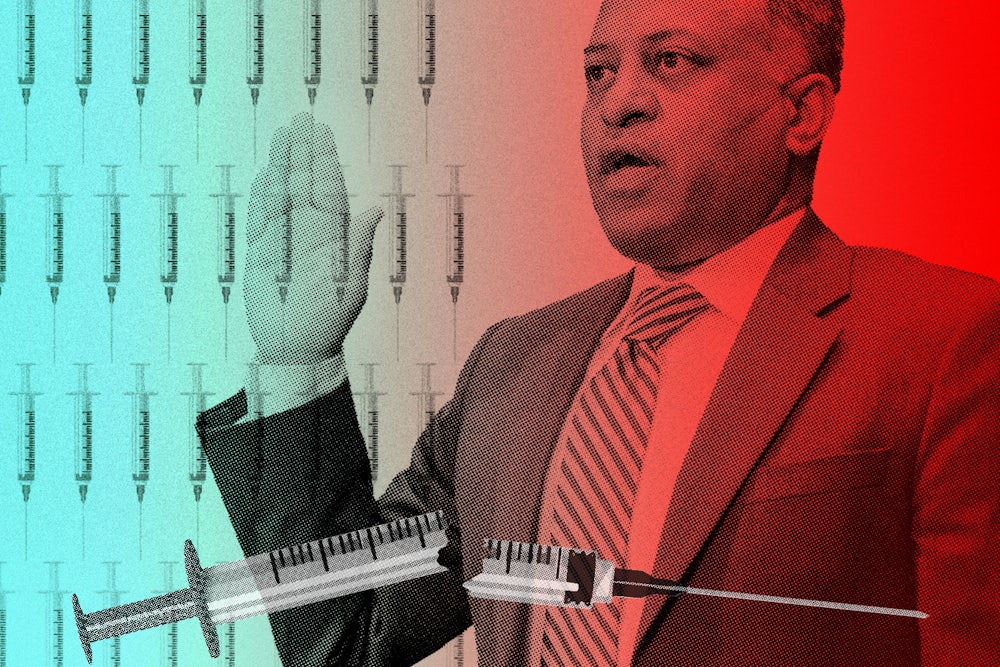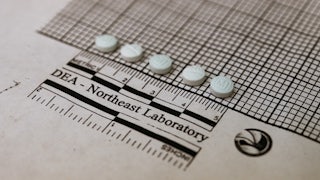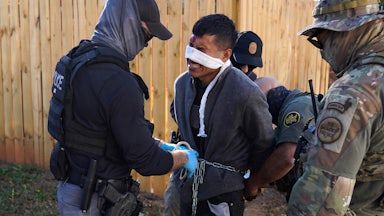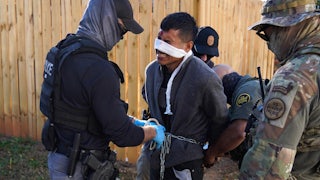For years, Sarah Stone woke up expecting to hear from her friend Kenny Riffle. It was rarely anything important. Just a “hi” or a “good morning” or a “how are you?” Sarah was in recovery from years of opioid misuse; Kenny was struggling to stop.
One morning, in October 2017, Kenny didn’t write to Sarah, and she knew immediately what it meant. He wasn’t the first person in her life to die from drug use—her brother had overdosed in 2007—but it felt different because, when Kenny died, Sarah realized she could hardly remember what her brother looked like. She didn’t want that to happen again, so she wrote down Kenny’s name. She then decided to write down the names of any person close to her who overdosed. In the four years since Kenny’s death, Sarah has added 40 entries to her list. The last came in late summer, when a friend overdosed in a hospital bathroom.
Sarah shared that news with me a few weeks after I first spoke with her and Joe Solomon. They, along with a few others, run a nonprofit in Charleston, West Virginia, called SOAR. The duo was driving across the city to distribute naloxone, a medicine used to reverse opioid overdoses. Their mobile operation, which sprang up about three years ago, is based on a series of principles known as harm reduction. Unlike traditional drug interventions, which focus on getting people “clean” as quickly as possible, harm reduction emphasizes keeping drug users safe.
That’s always been a challenge in Charleston, but things have gotten especially bad in recent years. City officials have barred SOAR and other groups like it from freely distributing clean needles, a practice that the Centers for Disease Control and Prevention and 30 years of peer-reviewed research have confirmed reduces the spread of illnesses like hepatitis and HIV.
Such a policy is especially perplexing in a place like Charleston: In 2020, 208 people died from overdoses in Kanawha County, which includes the city and its immediate surroundings. It’s a rate about as high as anywhere in the United States. But as Sarah is quick to point out, this is more than a grim statistic. “These are our friends,” she tells me. “These are people who we have dinners with. People who we go to parties with. People who we split the rent with.”
Looming over any conversation about the opioid crisis in West Virginia is Dr. Rahul Gupta, whom President Biden nominated earlier this year to be the head of the Office of National Drug Control Policy (ONDCP). Gupta spent almost a decade in the state, first as the head of Kanawha-Charleston Health Department, then as the state’s health commissioner. He amassed a considerable public profile while there. During my reporting, I frequently heard locals joke that if a person ever really needed to find Gupta, the fastest way was to swing a microphone around in public. (Nevertheless, he declined to be interviewed for this story and did not respond to detailed requests for comment.)
Gupta’s ambition may make him the butt of jokes, but his notoriety largely comes from another source: authorizing a May 2018 report that helped to put the nail in the coffin of a needle exchange program operated by Kanawha County’s public health department. In that report, Gupta’s office claimed the program wasn’t collecting sufficient data from those picking up needles, and that its administrators were failing to move enough people into treatment. The report compared the county program with another exchange in the city operated by West Virginia Health Right. But to people like Joe and Sarah, Health Right seemed to be a harm reduction program more in name than in spirit. Its exchange policies, which effectively required that users return every needle they used, defied the CDC’s recommendation. Health Right’s health impact was also far smaller. Public records indicate that it disbursed a little more than 24,000 needles in 2019; from January 2017 to March 2018, the county’s exchange was disbursing about 34,000 each month.
Experts rebuked the report, claiming that it showed a tenuous understanding of harm reduction. Among the loudest of these critics was Peter Davidson, a professor of public health at the University of California, San Diego, who wrote in a letter that the report’s recommendations presented “severe and in some cases unconscionable barriers to effective, evidence-based, primary prevention.” There were more than epistemic disputes at play: The needle exchange had become a flashpoint in the local mayoral race, with Republicans battering the program and the mayor calling it “a mini-mall for junkies and drug dealers.” Gupta insisted that the report could be a teaching moment for public health practitioners. But he did not stick around to implement its findings: By September, he had left his position to join the March of Dimes, where he made almost $400,000 in 2019, according to federal tax returns.
Gupta was neither the sole person involved in the report, nor a member of the legislative bodies that promulgated the policies now affecting groups like SOAR. But critics say his work still helped make Charleston the epicenter of what the CDC earlier this year called the “most concerning” HIV outbreak in the United States.
“The report was incredibly damaging,” says Laura Jones, who runs a free clinic in Morgantown, a city a few hours north of Charleston. “It laid the groundwork for the situation today.”
Over the last year, the Biden administration has promised to lead the American people based on science, a reenvisioning of political life that Gupta slots into nicely. He would be the first doctor to lead ONDCP, and a far cry from past czars like the pugnacious William J. Bennett, who once claimed that drug legalization would put “a daily dose of cocaine well within the allowance budget of most sixth-graders.”
And yet if it’s hard to see much resemblance between Gupta and his predecessors, it’s also unclear how well-equipped he will be to respond to the opioid crisis. Even his advocates have occasionally struggled to mount a convincing defense of his work. When I asked one person who recommended Gupta for the ONDCP position about the 2018 report, they admitted that the incident had made it “not easy for me to write a recommendation” on his behalf.
One thing is certain: The need for changes in federal drug policy is immense. For 50 years, U.S. officials have relied overwhelmingly on prisons and policing as responses to drug use, even though there is little evidence that criminalization has made us safer. While the number of people incarcerated for drug offenses has increased more than tenfold since 1980, the number of people dying from overdoses has increased almost twelvefold. Every state has reported increases in overdose deaths during the pandemic, which has coincided with the proliferation of unregulated fentanyl. Our reliance on law enforcement has even made things worse in some cases, according to Leo Beletsky, a law professor at Northeastern University. But shifting resources away from police has proved an immense challenge—and not because people like Beletsky are in the minority. In a 2018 panel organized by The New York Times, Beletsky, Gupta, and 28 other experts were asked how they would spend $100 billion to address the opioid epidemic. Just one person, J. Scott Thomson, the chief of police of Camden, New Jersey, recommended earmarking more than 15 percent for drug interdiction and policing. Nevertheless, the Biden administration will dedicate more than $16 billion, about 40 percent of its total drug control budget, for those two purposes next year.
If funding priorities have changed only modestly, harm reduction has become increasingly common parlance in Washington. In April, ONDCP announced that funding “evidence-based harm reduction” programs would be one of its top priorities for the year, for the first time in its history; the American Rescue Plan, passed in March, included a $30 million carve-out for local harm reduction. But there is still considerable debate about what appropriate harm reduction looks like: Biden’s Department of Justice is weighing whether to continue with a lawsuit, started by Trump’s DOJ, which has prevented the opening of a safe-injection site in Philadelphia, another public health measure supported by decades of research.
Gupta is an appropriate standard-bearer for this ambiguous moment. On the one hand, he has frequently spoken in favor of harm reduction programs. The same year as his notorious report, he was the lead author of West Virginia’s opioid response plan, which called on the state to expand syringe exchanges. (In his New York Times survey, Gupta also suggested that some funding go toward naloxone distribution and safe injection sites.) But there is reason to worry that his willingness to back conservative proposals in the interest of harmony may stymie a more sensible and humane approach to drug use. Still, as a former public health official in West Virginia told me, Gupta does have a rare chance once in office to “atone for his sins.”
In the meantime, though, those in Charleston are stuck living in the world Gupta helped create. “We’ve had no reckoning here,” Joe Solomon told me. “We’re still living in Sarah’s list, completely unacknowledged.”






